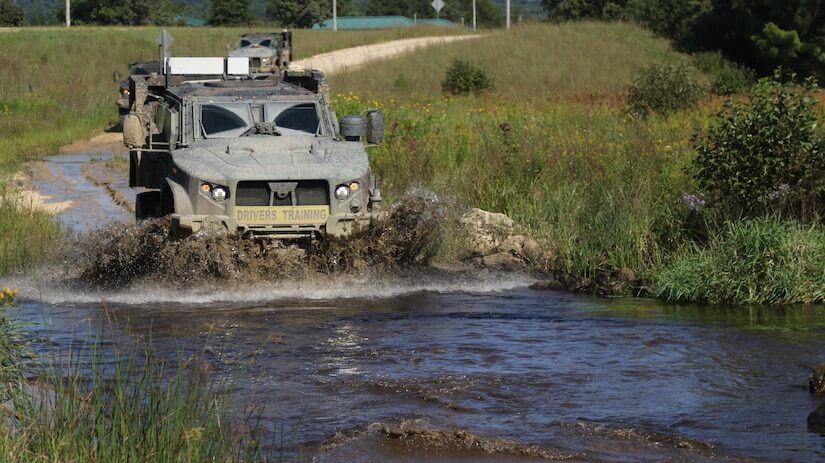The United States’ “competitive advantage is eroding” and being challenged in every capacity, but a focus on modernizing military equipment could help support the country’s new strategy, according to a recent report.
Because of its focus on “counter-insurgency and counterterrorism” since 2001, “near-peer adversaries” have been able to improve their own modernization efforts where the U.S. hasn’t, the Department of Defense’s “National Guard and Reserve Equipment Report for Fiscal Year 2022” stated.
“The Army must regain its overmatch and competitive advantage against emerging threats, competitors and adversaries,” the report stated. “It must transition from readiness to modernization to increase lethality against emerging regional and global near-peer adversaries”
The following are highlights of the latest equipment across the total force:
Cold Weather All-Terrain Vehicle (CATV)
The Army National Guard and Army Reserve support the latest Arctic strategy, which intends to replace small-unit support vehicles with the CATV, a lightweight, tracked vehicle designed for “extreme environments, including snowy, marshy and amphibious terrain,” the report stated.
Expect CATVs in Alaska, Vermont, Colorado, Minnesota and units supporting disaster response training, like the Army Mountain Warfare School at Camp Ethan Allen in Jericho, Vermont.
Joint Light Tactical Vehicle (JLTV)
For the Marine Corps Reserve, the JLTV is the top priority. This joint Army and Marine Corps program makes the vehicles and companion trailers more mobile and safer.
Upgrades, according to the report, minimize maintenance costs, improve reliability and fuel efficiency. Scalable armor will also provide better protection while restoring payload capabilities lost with the armored high-mobility, multipurpose wheeled vehicle fleet.
Tactical Decision Kit (TDK)
Marines and sailors will also utilize simulation technology to hone warfighting skills with the TDK. This virtual, first-person shooter simulator enables troops to practice against a “thinking enemy and improve tactical decisiveness in any environment … both on and off duty,” according to the report.
Model Defender Kit (MDK)
The Air Force’s MDK program will deliver technically-advanced equipment to the Air National Guard and Air Force Reserve security forces, that also support the Air Force and Space Force.
MDK’s goal is to standardize “day-to-day required equipment items” for security forces,” Master Sgt. Markus T. Nelson and Master Sgt. Derek Walton, the Air Force Security Forces Center Manager of Security Forces individual equipment at Joint Base San Antonio, said via email.
This effort saves time, money, and resources, allowing units to focus on its mission, thereby “enhancing their lethality and survivability while operating in a battlefield environment,” they said.
For example, troops will have better fitting and lighter body armor, including female body armor and new modular scalable vests.
Furthermore, according to a press release from the Air Force Installation and Mission Support Center Public Affairs, MDK will result in replacing the M18 modular handgun with the M9. The M18’s ergonomic features will improve target acquisition and accuracy, and the fully automatic M4A1 carbine rifle, equipped with a direct view optic will replace the semi-automatic M4.
Other changes include Replacing the M24 precision rifle with the M110A1 and light-weight polymer cased 50-caliber rounds with 50-caliber rounds with heavier brass shells.
Counter Communications System
The USSF plans to enter the space warfighting domain with its Counter Communications System (CCS).
Designed to temporarily deny or degrade adversary satellite systems, CCS is an upgraded ground-based transportable electromagnetic warfare system, according to a press release by the newly re-designated Space Systems Command.
ANG units from California, Colorado, and Florida and 4th Space Control Squadron at Peterson Air Force Base – now Space Force Base, Colorado Springs, Colorado – will deploy and operate the system that has, “new software capabilities to counter new adversary targets and threats,” Maj. Seth Horner said in the release.

